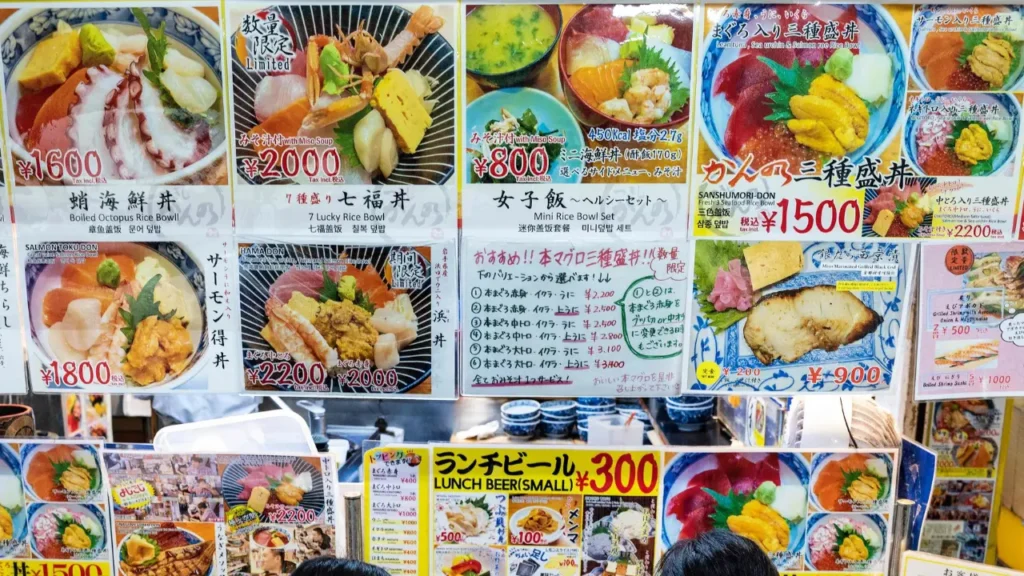Tokyo shoppers still feel the pinch as food prices in Japan climb after several years of global shocks. Consumers notice higher totals at checkout even when they buy fewer items. Import costs, energy bills, and labor shortages push supermarket shelves to display steeper labels. Yet residents keep searching for bargains because mealtimes remain central to daily life.

Urban Price Surges and City Living
Big cities reveal the steepest spikes, and commuters discuss them on crowded trains. A single loaf of bread in Shibuya can now equal a full lunch set in smaller towns. Convenience adds cost because rents rise for central stores. Consequently, food prices in Japan feel heavier in Tokyo, Osaka, and Nagoya than in farming regions.
Rural Markets Offer Relief, However
Travelers who leave the expressway for countryside road stations often breathe easier. Farmers sell produce directly, slashing transport fees and middleman markups. Many locals plan weekend drives to stock vegetables and fruit at friendlier rates. This habit balances their monthly budgets even as food prices inch upward.
Seasonal Produce
Spring brings strawberries, summer offers watery watermelon, autumn showcases sweet potatoes, and winter displays perfect mandarin oranges. When buyers match meals to harvest calendars, they protect their wallets and enjoy peak flavor. Because seasonal abundance lowers wholesale quotes, store managers pass on a portion of the savings. Therefore, food prices in Japan swing with the calendar as much as with policy.
| Common Item | Average Tokyo Price (¥) | Average Rural Price (¥) | Note |
|---|---|---|---|
| White rice (2 kg) | 1,200 | 1,000 | Prices rise with harvest quality |
| Fresh milk (1 L) | 240 | 200 | Cold-chain costs drive city gap |
| Eggs (10 pack) | 300 | 260 | Feed imports affect every shelf |
| Shoyu soy sauce (1 L) | 350 | 320 | Local brands vary by region |
Dining Out on a Budget
Although café lattes cost more, diners still meet friends because eating together lifts spirits. Ramen chains keep base bowls around one thousand yen to stay competitive. Quick gyudon counters hold sets near eight hundred yen, absorbing profit cuts. This restraint helps soften the blow of food prices for students and office workers.
Late-Night Bento Deals
After sunset, clerks paste yellow stickers on bento, sushi, and salads to clear shelves before expiry. Shoppers memorize discount times and grab supper at half the usual cost. Because every major chain follows strict waste rules, unsold meals must not linger overnight. Bargain hunters treat this nightly ritual as an easy fix when food prices in Japan test patience.
Imported Goods
Weak yen makes chocolate, cheese, and coffee more expensive the moment containers land at Kobe port. Importers adjust lists quickly, and retailers update tags within days rather than weeks. Still, curious eaters crave overseas flavors, so demand stays steady despite jumps. The currency question thus magnifies food prices beyond homegrown factors.
Household Strategies
Families plant balcony herbs, sprout mung beans in jars, and freeze bulk buys into meal kits. Parents teach children to compare unit prices instead of grabbing eye-level brands. Smartphone apps track weekly specials and send alerts for flash markdowns. These habits build resilience as food prices trend higher than historical averages.
Government Actions, Subsidies, and Stockpiles
Officials release rice reserves when storms shrink harvests, smoothing sudden spikes. Subsidies for fuel help truckers haul produce without passing full bills to stores. Label reforms also push for clearer per-gram pricing so buyers spot sneaky hikes. Public measures matter because they slow sharp climbs in food prices and keep diets balanced.
Practical Takeaways
Analysts expect moderate relief once shipping bottlenecks ease and solar energy cuts factory costs. Yet ongoing labor shortages may hold baseline costs above the last decade. Shoppers who stay flexible, cook seasonally, and chase late-day markdowns will stretch yen further. Watching these trends keeps everyone ready while food prices in Japan evolve in the years ahead.
Leave a Reply